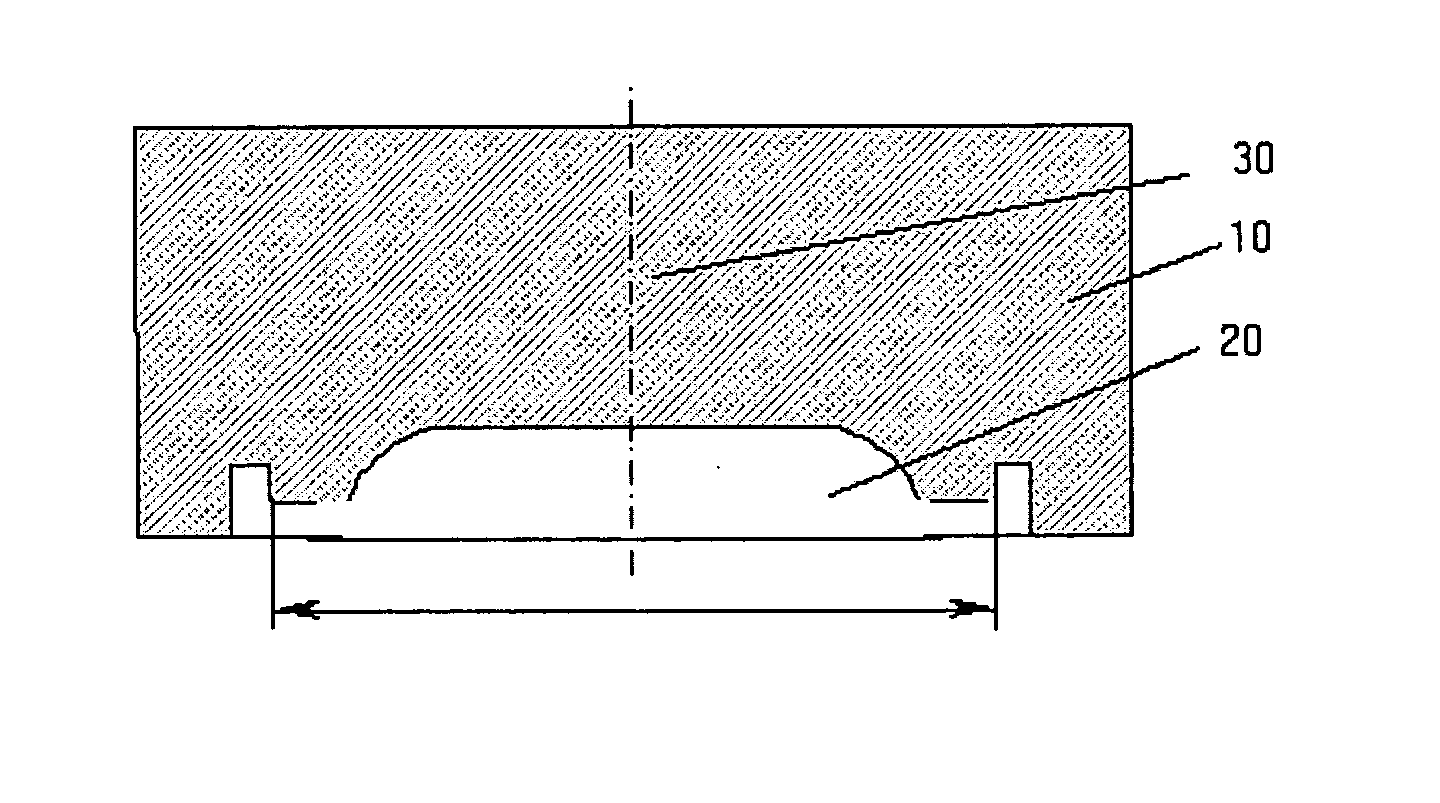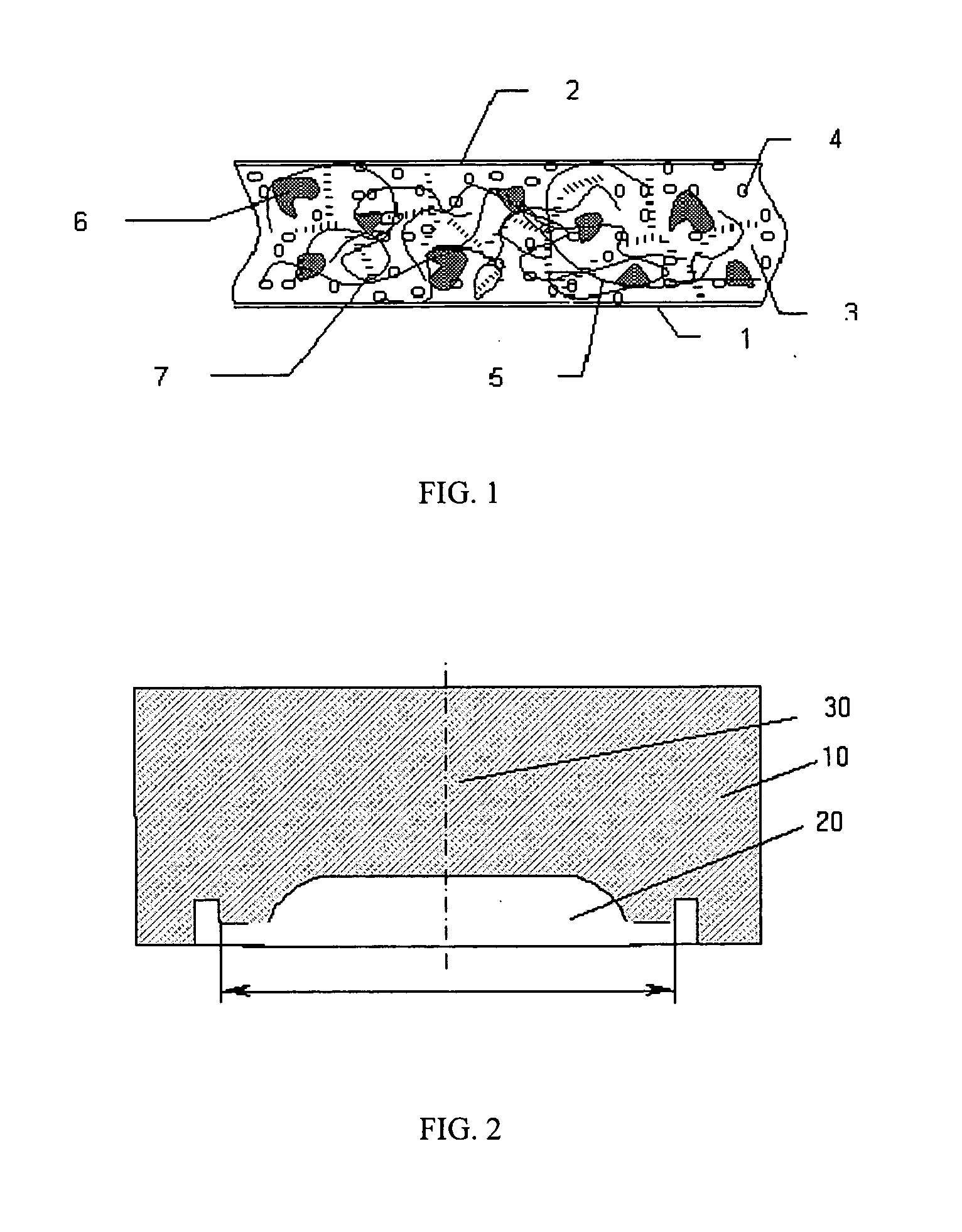Composition for cushions, wounds dressings and other skin-contacting products
a technology of skin contact and composition, applied in the field of skin contact adhesive composition, can solve the problems of limited absorbance of wound wound materials, use of adhesives, wound injury upon removal,
- Summary
- Abstract
- Description
- Claims
- Application Information
AI Technical Summary
Benefits of technology
Problems solved by technology
Method used
Image
Examples
example 1
[0151] The following are exemplary formulations of skin-contacting adhesive of the invention. The prepared formulations were all translucent, as determined visually.
[0152] The manufacture of Formulations 1 and 2 involved adding the cellulose derived polymers at a high temperature (>130° C.). In this manner, the polymers are melted, forming liquid crystalline droplets, which are stretched at mixing giving fibers (high MW cellulose derived polymer) or ellipsoids (low MW cellulose derived polymer).
Formulation 1IngredientWt %Hydrophobic polymer: Vector 411144.69Elastomeric plasticizer: Styrene plasticizer28.86Tackifying resin: Regalite ®91001.86High MW Cellulose derived polymer: MF9.31Low MW Cellulose derived polymer: LF9.31Clay particles: Cloisite Na+5.6Other ingredients: Irganox ®10100.37
[0153]
Formulation 2IngredientWt %Hydrophobic polymer: Vector 411145.11Elastomeric plasticizer: Styrene plasticizer30.07Tackifying resin: Regalite ®91001.88High MW Cellulose derived polymer: MF9.40L...
example 2
[0158] The following is another exemplary formulation of the skin-contacting adhesive of the invention. The prepared formulation was translucent, as determined visually.
[0159] The manufacture of Formulation 3 involved adding the cellulose derived polymers at a lower temperature (about 100° C.). In this manner, the polymers behaved like a powder.
Formulation 3IngredientWt %Hydrophobic polymer: Vector 411145.54Elastomeric plasticizer: Styrene plasticizer29.41Tackifying resin: Regalite ®91001.9High MW Cellulose derived polymer: MF9.49Low MW Cellulose derived polymer: LF9.49Clay particles: Cloisite Na+3.8Other ingredients: Irganox ®10100.38
Water Uptake Studies
[0160] A water uptake study of Formulation 3 was conducted as described in Example 1. The percentage water uptake was 35.6, with a swell ratio of 1.22
Tack Studies
[0161] A tack study was conducted as described in Example 1. Formulation 3 had a tack of 375.7 g at 0.2 cm / sec and 142.3 g at 0.01 cm / sec.
example 3
[0162] The following is an additional exemplary formulation of the skin-contacting adhesive of the invention. The prepared formulation was translucent, as determined visually.
[0163] The manufacture of Formulation 4 involved adding the cellulose derived polymers at a high temperature (above 130° C.) so the polymers behaved like liquid crystals.
Formulation 4IngredientWt % (temp / rpm)Tackifying resin: Regalite ®910027.97(94 / 23)Hydrophobic polymer: Vector 41119.57(100 / 23)Hydrophobic polymer: Vector 41149.54(101 / 23)Elastomeric plasticizer: Styrene plasticizer14.5(151 / 31)Other: Adhesive Agent1.5(150 / 58)Clay particles: Cloisite Na+3.0(144 / 100)Low MW Cellulose derived polymer: JF11.97(140 / 100)High MW Cellulose derived polymer: GF17.95(144 / 100)High MW Cellulose derived polymer: HF4.0(146 / 100)
[0164] The ingredients are listed in the order in which they were added to the mixture. “Temp” refers to the temperature (° C.) of the mixture or melt when the particular ingredient was added, while “r...
PUM
| Property | Measurement | Unit |
|---|---|---|
| Area | aaaaa | aaaaa |
| Molar mass | aaaaa | aaaaa |
| Molar mass | aaaaa | aaaaa |
Abstract
Description
Claims
Application Information
 Login to View More
Login to View More - R&D
- Intellectual Property
- Life Sciences
- Materials
- Tech Scout
- Unparalleled Data Quality
- Higher Quality Content
- 60% Fewer Hallucinations
Browse by: Latest US Patents, China's latest patents, Technical Efficacy Thesaurus, Application Domain, Technology Topic, Popular Technical Reports.
© 2025 PatSnap. All rights reserved.Legal|Privacy policy|Modern Slavery Act Transparency Statement|Sitemap|About US| Contact US: help@patsnap.com



